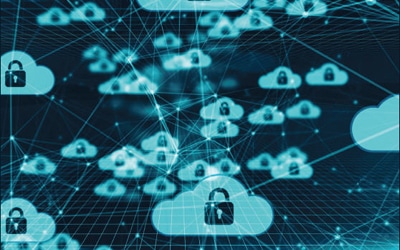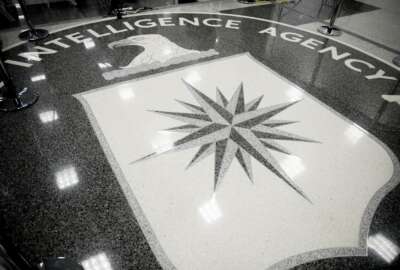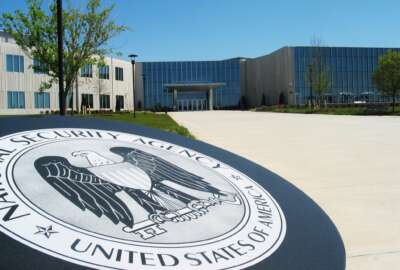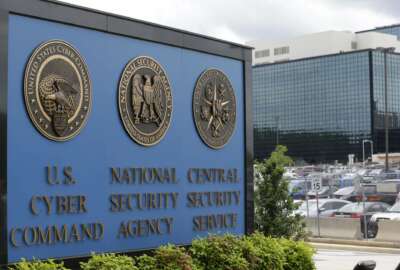NSA quietly re-awarded its Wild and Stormy cloud contract
Microsoft lost the 10-year top secret cloud contract competition for a second time, but decided not to protest.
The National Security Agency’s Wild and Stormy cloud procurement continues to live up to its name.
Four months after NSA lost what many believe to be its first ever protest of a contract award at the Government Accountability Office, it re-awarded the 10-year cloud contract, known by the distinctive moniker, which could be worth as much as $10 billion to Amazon Web Services.
The spy agency made the re-award in February, but details just surfaced in the last week.
An NSA spokesperson confirmed the agency’s decision.
“This contract is a continuation of NSA’s Hybrid Compute Initiative to modernize and address the robust processing and analytical requirements of the agency,” the spokesperson wrote in an email to Federal News Network. “Consistent with the decision in [the GAO protest] case, the agency has reevaluated the proposals and made a new best value decision.”
Sources also confirmed that Microsoft, which won the initial protest at GAO in October, decided not to protest the re-award to AWS, despite what many believe is a titled playing field.
A source, who requested anonymity in order to speak to the press, said a new protest would’ve just delayed the process, which would be detrimental to NSA and possibly national security.
But the source added, NSA’s decision does raise concerns about another single award contract for cloud services, in this case classified and top secret instances. Experts continue to question NSA’s decision especially after the controversial JEDI acquisition collapsed under immense pressure and scrutiny of its single award plan, and the move by the intelligence community from a single vendor — AWS — under the C2S vehicle to multiple cloud vendors under the C2E vehicle.
Additionally, sources highlight NSA’s decision again continues to, at least, offer the perception of special treatment for AWS. Sources says under the C2S contract, NSA and its intelligence community partners supported the development of AWS’s secret cloud instance while other cloud service providers received no financial or other type of benefit.
15 month acquisition saga
As for Wild and Stormy, NSA issued the solicitation in November 2020 and made the award to AWS in July under a two-phased best-value trade off approach.
AWS and Microsoft advanced to phase 2. NSA rated AWS higher and offered more value than Microsoft despite a base price of $482 million compared to $422 million, according to GAO’s bid protest decision.
Microsoft filed a protest on July 21 claiming NSA misevaluated proposals under the technical factor, under the management factor and around total price. Microsoft claimed that “the agency’s best-value selection decision was improper, and that NSA failed to meaningfully consider Microsoft’s lower price as part of the price/ technical tradeoff.”
GAO sustained Microsoft’s protest and recommended “NSA reevaluate technical proposals, consistent with this decision, and based on that reevaluation, perform a best value tradeoff and make a new source selection decision.”
NSA declined to offer any more details about how it reevaluated the proposals and how it came to the new award decision.
Joe Petrillo, an attorney with Smith Pachter McWhorter, told the Federal Drive with Tom Temin in December that GAO’s recommendation didn’t require NSA to reopen discussions or the Microsoft and AWS to revise bids.
“It’s up to NSA to decide how to implement this. They may have valid reasons for wanting to reopen and reevaluate the proposals,” Petrillo said. “One of the issues, interestingly enough, that wasn’t successful, although GAO did note, NSA should take it into account was there was a question about how the evaluated prices were developed, and how they were evaluated. They consisted of three sample task orders, and then prices for five different benchmarks. Those were all totaled, although it seemed that the benchmark prices, which were very small in comparison to the task order prices, in actual performance, those benchmark prices would constitute much more of the total price. Somehow the evaluation system didn’t take that into account. And NSA might want to fix that, but that would probably require a new round of proposals.”
What NSA exactly did this second time around may only be known by a handful of people involved in the procurement, but given the lessons learned with JEDI, C2S and the broad move to multi-cloud in the public and private sector, the single award is perplexing. It may make perfect sense to NSA now, but it’s hard to imagine locking any organization in to even one top secret cloud offering when others are obviously available is a smart decision over the long term.
Copyright © 2024 Federal News Network. All rights reserved. This website is not intended for users located within the European Economic Area.
Jason Miller is executive editor of Federal News Network and directs news coverage on the people, policy and programs of the federal government.
Follow @jmillerWFED







